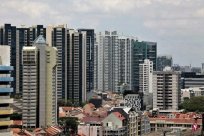Yu Yongding
In May, China's central leaders announced that it would give full play to the overall large -scale market advantages and domestic demand potential, forming a new development pattern of mutual promotion of domestic and international dual -cycle.Since then, the double -loop has become a topic of enthusiastic discussions at home and abroad.
Does the above statement indicate the fundamental change of China's growth model or development strategy?What is the purpose of introducing this new concept, and what policy changes will it bring?
To answer these questions, we must briefly review the process of reform and opening up in China since the late 1970s.At that time, the main obstacle to curb the Chinese economy was the shortage of foreign exchange reserves, and the policy makers faced a dilemma similar to the 22nd military regulations: without foreign exchange reserves, China could not start exports quickly, but if there was no sufficient amountExport growth cannot earn and accumulate the most basic foreign exchange reserves.
Fortunately, the original factory commissioned Manufacturing (OEM) in the 1970s, which provided China with a window to break the deadlock.From the late 1970s to the early 1980s, OEM produced in the southeast coast of China.Although foreign exchange reserves are stretched, Chinese OEM companies can import and process various parts of outsourcing by foreign companies; these complete products that have contributed the added value by Chinese companies will be sold in the international market.
This processing trade enables China to compare its advantages in full and low -cost skilled labor, and therefore gradually establishes a feedback cycle for processing intermediate products after processing.In each cycle, Chinese companies can accumulate more foreign exchange reserves, and the increase in reserves in turn promotes the import, processing and export of more intermediate products.
Through this benign import and export cycle, China's accumulation of foreign exchange reserves has continued to accelerate, and a large amount of capital inflows attracted by China ’s preferential policies to foreign direct investment have further strengthened this trend.In 1988, Chinese scholar Wang Jian created the word international cycle to describe China's export -oriented development strategy.
The strategy has achieved amazing success.In 1981, China's exports and imports were only 22.5 billion US dollars and US $ 21.7 billion, respectively.By 2013, China's total trade volume had nearly US $ 42 trillion, ranking the number one trading country in the world.In these 30 years, China's GDP (GDP) has jumped from the 17th (second only to the Netherlands) to the second place (surpassing Japan in 2010).
However, when an economy grows more than a node, the export promotion strategy may have a reaction.China, which has expanded for 40 years under the international large -cycle model, is no longer a small economy, and its export -oriented impact on the world is no longer insignificant.In fact, any products purchased by China have increased prices since the turn of the century, but the price of all its products has fallen all the way.
To make matters worse, China's unstoppable export orientation has stimulated the strong trade protectionist resistance of various imported countries (whether it is reasonable).China's continuous maintenance of trade and capital account surplus has been converted into accumulated foreign exchange reserves. Its scale reached 3 trillion US dollars in 2014, far exceeding the amount required to ensure liquidity.
It is also worrying that although China's net foreign assets have exceeded US $ 2 trillion, their investment income deficit has lasted for more than 10 years.This shows that there are serious problems in China's cross -border and cross -border resource allocation.
The Chinese government has long known that the success of the international cycle strategy has triggered various problems.In the 11th Five -Year Plan of China released in early 2006, the government clearly stated that China's growth should be based on domestic demand, especially consumer demand.The power of economic growth should shift from the growth of investment and exports, to the balanced growth of consumption and investment, and the balanced growth of domestic demand and foreign demand.
However, China's economic transformation has actually begun before this time. The proportion of trade and exports accounted for GDP, which reached 65%and 36%of the peaks in 2006.From 2008 to 2018, the proportion of net exports accounted for China's GDP from 10%to 1%.Since 2009, the contribution of net exports to China's GDP growth has been negative almost every year.
Judging from these trends, the introduction of the new concept of dual -loop, obviously does not mean that China's growth model will undergo fundamental changes.No matter what happens, China will not abandon other parts of the world.
Nevertheless, the decoupling and sanctions policies of the Trump administration have made China unprecedented. They can only double their efforts to linked economic growth with domestic demand and support domestic innovation to ensure a stable position in the global value chain.This urgent transaction may help explain why Chinese leaders begin to emphasize dual cycles.Because no matter what labels are posted on China, China will survive with its huge domestic market and developed manufacturing capabilities with its 1.4 billion people.
The author is the former chairman of the Chinese World Economic Society and the former director of the Institute of World Economic and Political Sciences of the Chinese Academy of Social Sciences. He served as a member of the Monetary Policy Committee of the People's Bank of China from 2004 to 2006.
English Title: Decoding ChinaSdual Circult Strategy
Copyright: Project Syndicate, 2020


